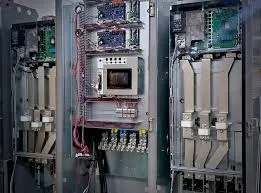Hazard Tape for Flooring A Comprehensive Guide
In industrial and commercial environments, safety is a paramount concern. One essential tool that helps ensure safety on the floor is hazard tape. This specialized tape serves as a visual warning for potential hazards, guiding individuals to navigate safely through various environments, such as warehouses, factories, construction sites, and even public spaces. In this article, we will explore the different types of hazard tape, its uses, and best practices for implementation.
Understanding Hazard Tape
Hazard tape, also known as warning tape or safety tape, is a type of adhesive tape that is designed with brightly colored patterns—most commonly black and yellow or red and white. This distinct coloring allows it to stand out against most flooring surfaces, making it an effective visual cue for people to take caution. The tape can come in various widths and adhesive strengths, depending on its intended application.
Types of Hazard Tape
1. Antiskid Hazard Tape This type is designed with a textured surface that provides additional grip, reducing the risk of slips and falls in areas where moisture or spills are common. Ideal for staircases, ramps, and busy walkways, antiskid hazard tape combines safety with functionality.
2. Reflective Hazard Tape For environments with low light, reflective hazard tape is essential. This type of tape reflects light, making it easily visible in dark conditions, which is particularly useful in emergency situations or areas with minimal lighting.
3. Floor Marking Tape Often used in warehouse settings, floor marking tape is designed to delineate aisles, storage areas, and safe walking paths. It is a critical tool for maintaining organization and ensuring that employees can navigate the space efficiently.
4. Electrical Hazard Tape Specifically designed for areas where electrical work is carried out, this tape is used to indicate high-voltage zones or to cover exposed wiring. It serves as both a warning and a protective measure.
Uses of Hazard Tape
Hazard tape is incredibly versatile and can be employed in various applications, including
hazard tape for floor

- Marking Hazards It is commonly used to delineate hazardous areas such as spills, wet floors, or locations where heavy machinery is operating. - Creating Boundaries In warehouses or factories, hazard tape can be used to establish clear boundaries for pedestrian areas, keeping workers safe from moving vehicles or machinery. - Emergency Preparedness In emergency situations, hazard tape can quickly mark off hazardous zones, guiding people away from danger and toward safety.
Best Practices for Implementing Hazard Tape
To maximize the effectiveness of hazard tape, consider the following best practices
1. Choose the Right Type Depending on your specific needs, choose the appropriate hazard tape. For example, use antiskid tape in areas prone to moisture and reflective tape in poorly lit environments.
2. Ensure Proper Application Surface preparation is key to ensuring that the tape adheres effectively. Clean the floor surface to remove dust, dirt, and moisture before applying the tape. Pay attention to temperature and humidity levels for optimal adhesion.
3. Regular Inspections Over time, wear and tear can affect the visibility and function of hazard tape. Regularly inspect and replace any damaged or faded tape to maintain clear communication about hazards.
4. Educate Employees Proper training and education about the meaning of different hazard tapes can significantly enhance workplace safety. Conduct safety meetings to explain the purpose and significance of hazard tape in the workplace.
5. Compliance with Regulations Be aware of local safety regulations and guidelines regarding the use of hazard tape. Following these regulations not only keeps your workplace safe but also ensures compliance with legal standards.
Conclusion
Hazard tape is a simple yet effective safety tool that can significantly reduce the risk of accidents in various environments. By understanding the different types of tape, their uses, and how to implement them properly, you can create a safer working space for everyone. Prioritizing safety through the effective use of hazard tape is not just a best practice; it is a commitment to the well-being of employees and visitors alike.
-
XIANGFAN Rubber Tape-Ultimate Solutions for All Your Insulation NeedsNewsJun.24,2025
-
XIANGFAN Rubber Tape-Protection for Industrial and Residential ApplicationsNewsJun.24,2025
-
XIANGFAN Rubber Tape: Superior Safety and Sealing for Demanding EnvironmentsNewsJun.24,2025
-
XIANGFAN Rubber Tape: Reliable Solutions for Every Electrical ChallengeNewsJun.24,2025
-
XIANGFAN Electrical & Industrial Tape: Powering Reliability Across IndustriesNewsJun.24,2025
-
XIANGFAN Electrical & Industrial Tape: Excellence in Every ApplicationNewsJun.24,2025
